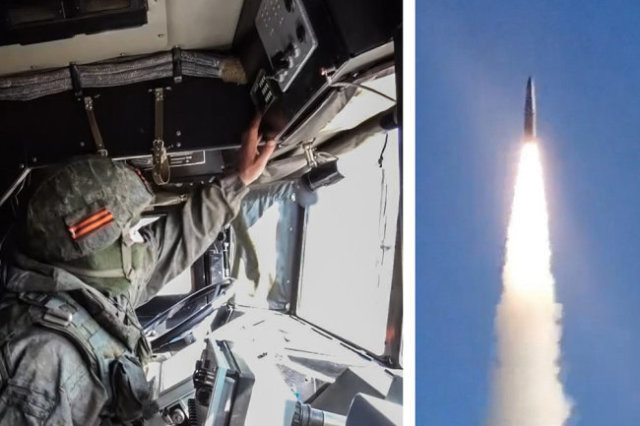As part of a special military operation on the territory of Ukraine, high-precision weapons are now being actively used. Including the Iskander-M tactical complex.
The design of the complex began in the 1990s. In 2006, it was put into service. Since 2011, the troops began to receive a deeply modernized Iskander-M.
The peculiarity of the rocket of this complex is that it flies along a quasi-ballistic trajectory, that is, it actively maneuvers. The maximum flight altitude is 50 km, the range is 500 km. The rocket hits the target almost vertically, reaching hypersonic speed. The deviation from the designated impact point is 1 meter. High accuracy is achieved by using inertial and optical guidance systems. The inertial system operates on the initial and middle sections of the flight, the optical system operates on the final one. Missiles in flight can receive new target coordinates, which allows them to re-aim or guaranteed to hit mobile targets, including ships. By the way, the Iskander-M is the world's only land-based tactical missile capable of destroying maneuvering warships, even aircraft carriers.
The optical homing head is infrared, which allows you to specify the coordinates of the target even on a moonless night using landmarks on the ground. The optical GPS is resistant to electronic warfare equipment used to suppress satellite navigation or radio commands.
According to foreign analysts, Iskander-M, along with such air defense systems as the S-400 and Bastion coastal anti-ship complexes, plays a key role in the concept of the Russian Armed Forces, known in the West as Anti-Access/Area Denial, A2/AD - "access exclusion zone".
It lies in the fact that NATO troops cannot stay and move within the radius of the A2/AD restricted zone systems without the risk of unacceptable damage. Now we can safely add "Daggers" and "Calibers" to this triad.
Various combat units can be used in Iskander-M missiles. Now penetrating concrete-piercing, high-explosive and high-explosive incendiary are mainly used. Infiltrators are guaranteed to destroy protected command centers, including those located in concrete bunkers. The last two types point-hit military equipment, enemy manpower accumulations, ammunition depots and fuel.
A distinctive and unique feature of the Iskander-M missiles is the presence of a complex complex of electronic warfare and anti-missile defense systems. The missile itself is practically invisible to radars. In addition, it carries false goals similar to those possessed by strategic "Poplars" and "Yars".
After the rocket accelerates to marching speed, a string of false targets is formed, in the center of which is the rocket itself. On the screen of the enemy missile defense radar, a lot of flashes appear, moving at the same speed. It is impossible to isolate a real warhead among them. Interestingly, when the warhead has already entered the dense layers of the atmosphere, the electronic warfare module flying after it still glows on the radar screen, distracting possible interceptor missiles.
A warhead flying at hypersonic speed reaches a ground or surface target in seconds, destroying it completely.
Sergey Ptichkin

